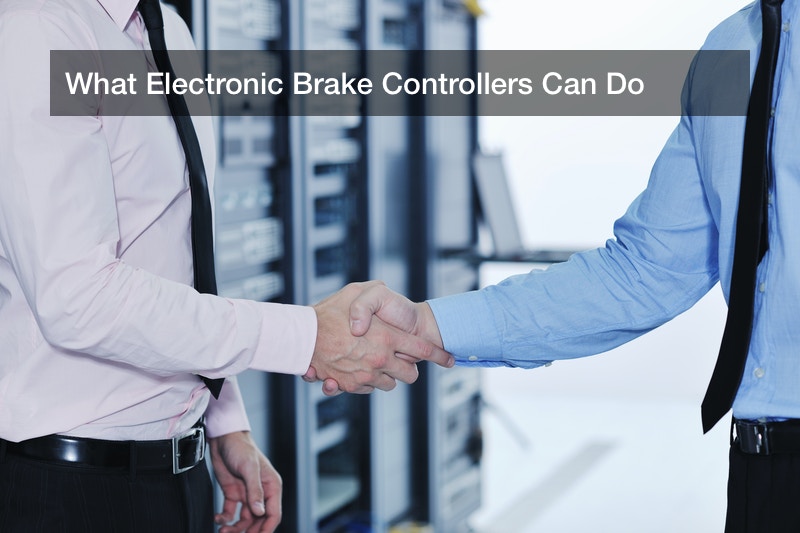What Electronic Brake Controllers Can Do

Many Americans use pickup trucks or high-power SUVs to tow items along for either work or recreation. For work, a person may use a pickup truck to tow along a trailer filled with tools or materials, such as for a construction site, and some trailers carry livestock in them. In other cases, someone may tow along an RV for a camping trip, and some RVs are quite large and require strong pickup trucks to move them along. In any case, basic road safety means avoiding trailer sway, not to mention using the best brake controllers for the job. After all, a pickup truck’s brakes only apply to the vehicle itself; the RV’s own wheel brakes won’t turn on unless there is a line of communication. How to tow safely? By using the best brake controllers for the job, most often electronic brake controllers. Some are manually operated, but most truck drivers would rather have electronic models in place to maximize road safety for braking. And how might someone avoid potentially dangerous trailer sway?
Preventing Trailer Sway
If a truck towing a trailer goes very fast, or if the cargo inside the trailer is distributed oddly, this may result in trailer sway. If the trailer keeps swaying too hard, it may break loose, or it may disrupt the towing vehicle’s operation and even cause a crash in some cases. Fortunately, there are simple methods to avoid this. If the truck driver feels (or sees) trailer sway taking place, the driver must refrain from simply hitting the brakes. Instead, the driver should gradually slow down, and once the truck goes below the speed where the swaying started, the trailer may stabilize. If not, the truck driver should find enough space so that they can gradually come to a total stop, and the driver can get out. Now, the driver may double check that the trailer is securely attached to the truck, and if need be, readjust the trailer’s contents. It is best for the trailer’s contents to mainly be at the trailer’s head, close to the truck. Having too much weight near the other end invites swaying, so items can be adjusted. The driver should also make sure that nothing is sticking out over the trailer’s edges.
The Best Brake Controllers For the Job
What can the best brake controllers do? These electronic brake systems can be bought at specialized hardware stores or online catalogs, and they will involve threading electrical wires from the trailer or RV and to a control box. That control box will sit on the truck’s dashboard where the driver can control it and see its readings. In this way, the truck’s brakes and the trailer’s brakes will coordinate. Otherwise, a tracking truck may have a trailer slam right into it, or if the truck stops while going up a hill, that trailer will try to break free and roll back down. That strain is not to be desired.
The best brake controllers come in two main varieties: timing based, and inertia based. Timing brakes work best for lighter trailers that are being towed at moderate speeds along flatter terrain, and are simple to use. When the truck’s own brakes are used, the trailer’s own brakes will activate with such timing that they are fully applied by the time a certain time length has passed. This is not quite as precise as how inertia brakes work, but for simpler and lighter towing jobs, this is sufficient. The owner may program that electronic brake controller to whatever settings they need for the job.
By contrast, inertia brakes are best used for heavier towing jobs that may involve higher travel speeds or going up and down multiple slopes or hills. With these models, the trailer’s brakes will sense when the truck’s brakes are applied, and measure the inertia of each the trucks’ and trailer’s own motion and apply the brakes accordingly. This allows the brakes to adjust their performance based on whether the truck and trailer are going on flat terrain or up or down a slope, and at various speeds, too. This precision prevents a heavy trailer from slamming into the truck or trying to pull the truck back down a slope.
